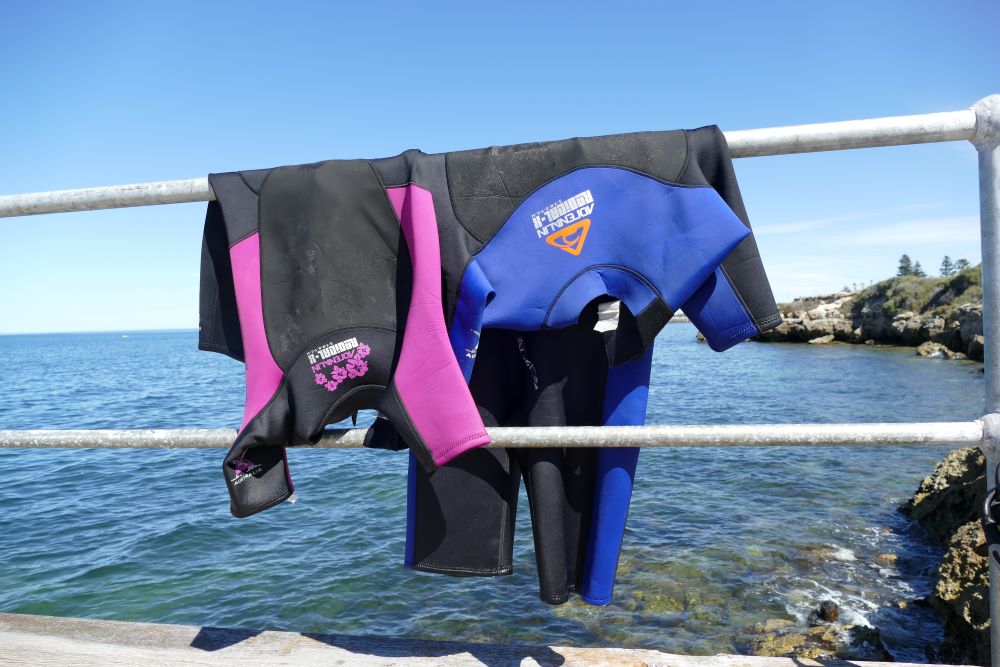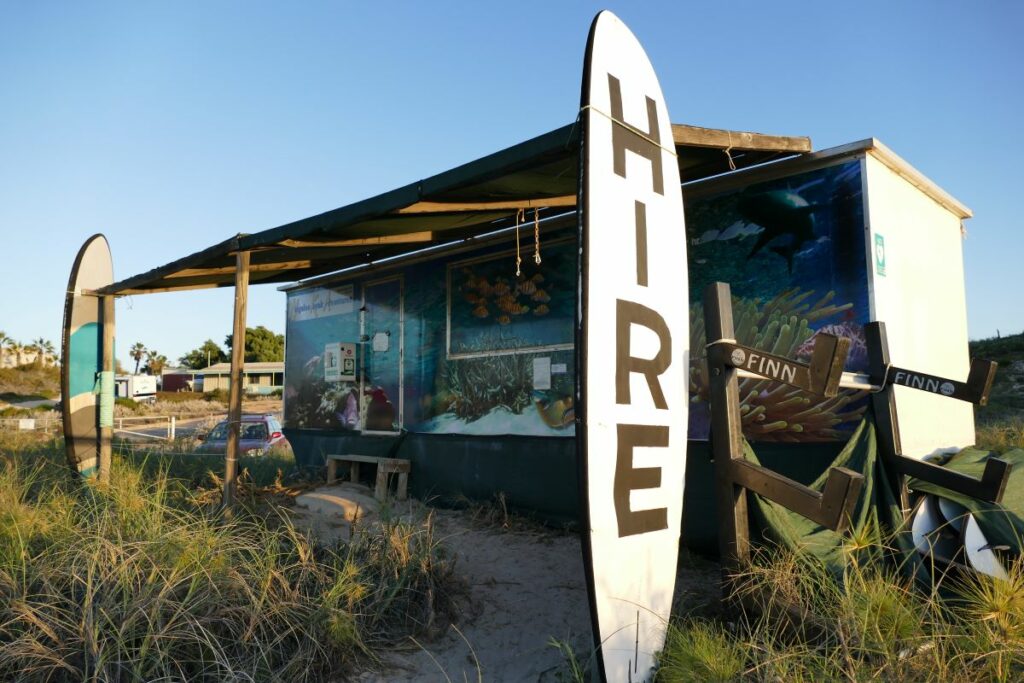Wetsuits and stinger suits are important pieces of snorkelling equipment. Choosing which one you need will depend on several factors such as when and where you are snorkelling, and whether you want extra buoyancy or protection for the sun, stingers or the cold.
We have worn and owned both and used them in a range of conditions so let’s look at which kind of suit works best in different conditions.
Disclosure: Please Note That Some Links In This Post May Be Affiliate Links, And At No Additional Cost To You, We Earn A Small Commission If You Make A Purchase. Commissions Go Toward Maintaining The Snorkel Spots Website.

Understanding the Basics: Wetsuit vs Stinger Suit
First, let’s understand what the differences are between a wetsuit and a stinger suit and why they are a useful piece of snorkelling gear:
Wetsuit
- A wetsuit keeps you warm. They trap a thin layer of water between the suit and the skin creating an insulating layer that helps regulate your temperature.
- It is typically made of neoprene, a synthetic rubber.
- Wetsuits come in a variety of thicknesses. 2-3mm wetsuits are ideal for water between 18 – 25 degrees. 5 -7mm wetsuits are used when the water is between 10 – 20 degrees.
- You can get full length wetsuits that cover all your arms and legs or shortie wetsuits that cover only your upper arms and legs
- Wetsuits also provide buoyancy which is good if you are a new to snorkelling – but a problem if you want to duck dive underwater!
- Wetsuits also protect you from marine stingers
Stinger Suits
- Stinger suits are mainly used for protection against stinging marine creatures, such as jellyfish and sea lice.
- Stinger suits are generally made of similar material to bathers such as Lycra, Nylon, and Elastane and are much thinner than wetsuits
- Unlike a wetsuit, stinger suits do not provide extra buoyancy or warmth.
- They provide protection from the sun.
- Because they are much thinner, stinger suits can be a bit easier to get off and on than a wetsuit
Factors Influencing Your Choice:
There are a range of factors that can affect which type of suit you wear.
Water Temperature
Staying warm is the main reason to wear a wetsuit. We recommend if the water temperature is less than 25 degrees, it is worth having a wetsuit.
This is especially the case if you are snorkelling with children. They start feeling the cold much faster than adults.
A shortie wetsuit is a great option in mild conditions. They are not only easy to get on and off, but they also provide a bit of warmth that will let you stay in the water for longer
If you do something like snorkel with the giant cuttlefish near Whyalla in South Australia in June you will not only need a 7mm wetsuit but gloves, boots and a hood too. That was the coldest snorkel we have ever done!
Protection from Marine Life
There is a reason stinger suits are called stinger suits! They are primarily worn to protect against the stinging tentacles of box jelly fish and Irukandji. They can also protect from sea lice.
If you are heading to northern Australia from November to May, you won’t want to get in the water without one. Often, stinger suits are provided by tour operators that run during this time and they are experts at getting you into a well fitted suit.
It always pays to research the area you are visiting to see if stinger suits are needed. For instance, while they are required if you go for a snorkel from Cairns, stinger suits are not needed if you snorkel on Ningaloo Reef in Western Australia.
Sun Protection
Another excellent benefit of a stinger suit is the protection it provides from the sun.
While you could wear a rash top for some sun protection, stinger suits will cover you completely so the back of your neck, arms and legs are safe from the sun’s rays.
Personal Comfort
Comfort can also play a role in choosing between a wetsuit and a stinger suit. If you are sensitive to the cold, a wetsuit is a better option.
The extra buoyancy offered by even a thin wetsuit can also provide some confidence to less experienced swimmers.
You might also have a preference for the fit of what you are wearing. Well fitted wetsuits are body hugging and firm fitting while stinger suits are much looser. Some people don’t like the tightness of a wetsuit, others don’t like the baggy feeling of stinger suits.
Duration of Snorkelling
We mentioned this earlier, but even if the water is mild, staying in it for an extended period (more than 1 hour), can reduce your body temperature.
If you have a long snorkel planned, a wetsuit is a better option than a stinger suit because it will stop you getting cold and the extra buoyancy will help prevent fatigue.

Should you hire or buy a wetsuit or stinger suit?
The decision whether to purchase a suit comes down to how often you think you might use it.
We snorkel regularly and have a 2-3mm shortie and full length wetsuit. It is great having them handy and knowing they will fit properly.
We don’t own a stinger suit. We prefer having a light wetsuit to keep the cold away. The odd time we go to stinger spots, we hire suits from tour operators.
We also hire thick wetsuits if we do something like snorkel in the sinkholes in the southeast of South Australia or swim with cuttlefish when the water is less than 15 degrees.
If you are just an occasional snorkeller or go mostly on snorkelling tours, the tour companies usually have good quality suits to hire in a wide range of sizes.
Choose what works for you!
In summary, yes – we think you should have either a wetsuit or stinger suit to get the most from your snorkelling.
Which one you choose will come down to where you are snorkelling and the comfort you want to have in the water.
In the end, whether it’s the snug fit of a wetsuit or the protective shield of a stinger suit, you will be able to fully immerse yourself in the beauty of the underwater world with confidence and comfort.
- What Snorkelling Equipment do I Need? - February 15, 2024
- How to choose a Good Snorkelling Location for Beginners - February 15, 2024
- Do I need a Wetsuit or Stinger Suit for Snorkelling? - February 15, 2024

